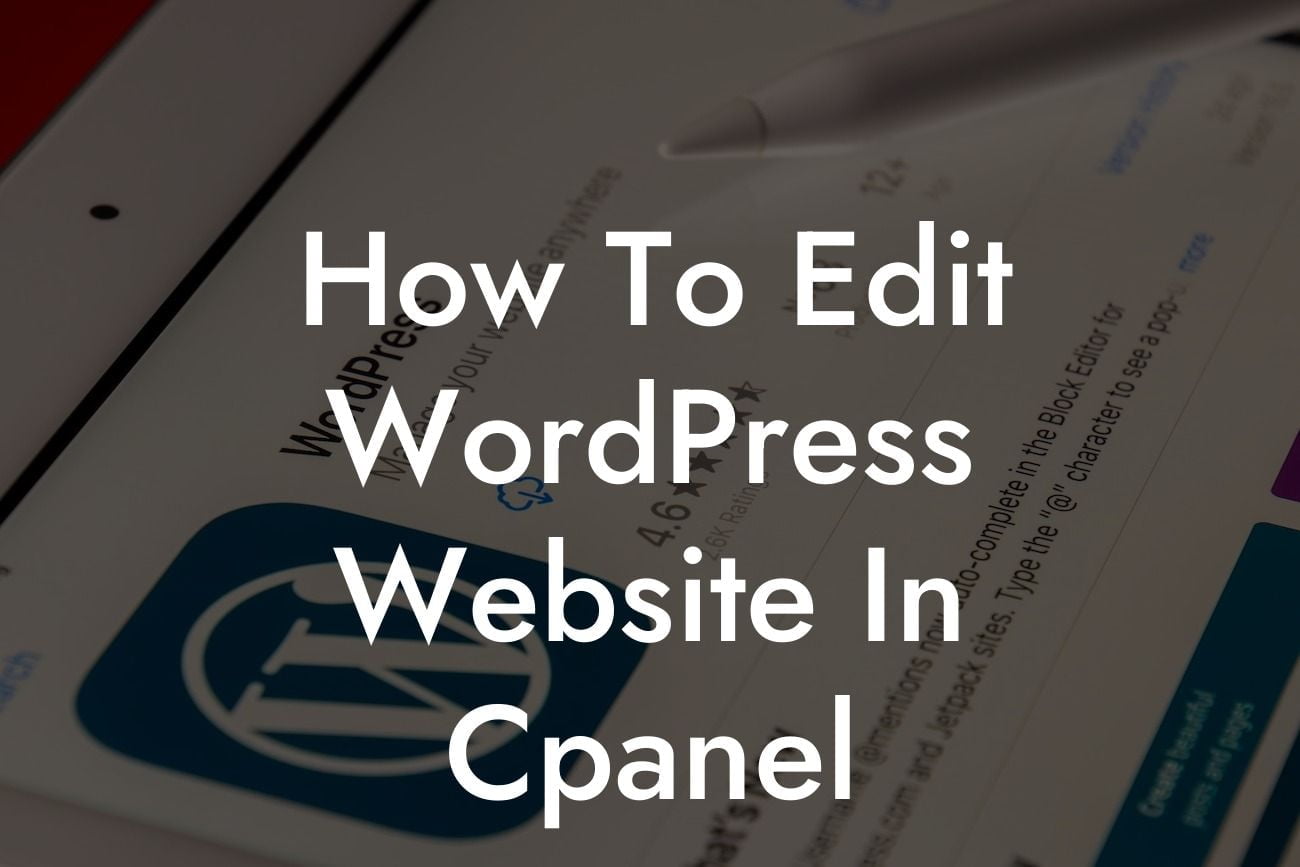Do you want complete control over your WordPress website? Looking to make changes beyond what the WordPress dashboard allows? Editing your WordPress website in cPanel gives you unparalleled freedom to customize and optimize your site. In this detailed guide, we'll walk you through the steps of editing your WordPress website in cPanel, empowering you to elevate your online presence and supercharge your success as a small business or entrepreneur. Get ready to say goodbye to cookie-cutter solutions and embrace the extraordinary!
1. Understanding cPanel and its Benefits:
In this section, we'll delve into the basics of cPanel and why it's a powerful tool for website management. From its user-friendly interface to the wide range of functionalities it offers, we'll explore how cPanel can help you take control of your WordPress website.
2. Accessing cPanel:
Here, we'll guide you through the process of accessing your cPanel account, ensuring you have the necessary login credentials. We'll also provide alternative methods to access cPanel if you encounter any issues.
Looking For a Custom QuickBook Integration?
3. Locating File Manager in cPanel:
Once you're inside cPanel, we'll show you how to find the File Manager tool, which allows you to navigate and edit your WordPress files easily. We'll explain the different directories and files you may encounter and provide tips for efficient file management.
4. Modifying WordPress Files:
In this section, we'll provide step-by-step instructions on how to edit key WordPress files, such as the wp-config.php file, theme files, and plugin files. We'll also share best practices to ensure you don't accidentally break your website during the editing process.
5. Making Database Changes:
To take your WordPress customization further, we'll guide you on making database changes through cPanel. From updating URLs to modifying table prefixes, you'll have complete control over your website's database, without relying on plugins or additional tools.
How To Edit Wordpress Website In Cpanel Example:
Let's consider a scenario where you want to change the color scheme of your WordPress theme. Using cPanel, you can easily locate and edit the CSS file responsible for the theme's styling. We'll demonstrate the exact steps you need to follow, along with tips for choosing the right CSS selectors to target.
Congratulations! You are now equipped with the knowledge to edit your WordPress website in cPanel. Take full advantage of your newfound control and exploration by exploring DamnWoo's other guides, designed exclusively for small businesses and entrepreneurs like yourself. Enhance your online presence and unlock your true potential with DamnWoo's awesome plugins tailored to elevate your success. Don't forget to share this article with others who may benefit from unleashing their website's potential!













